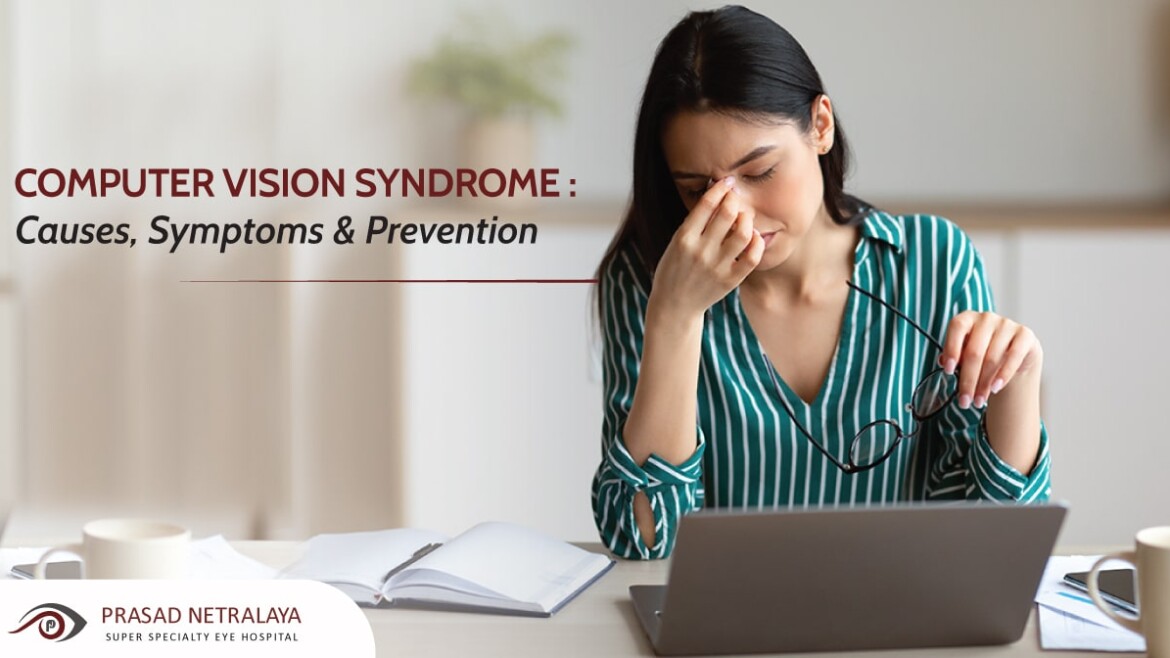If you are reading this, the chances are high that you have a job that involves spending time looking at a computer or phone screen. As the world gets increasingly digitised, more and more of us spend our work days staring at screens. And even if our job does not involve computers, we look at screens for entertainment. With the onset of online education, children are also spending their time looking at screens all the time.
We have previously written about how to protect children’s eyes when they are learning online. In this blog post, we are going to look generally at Computer Vision Syndrome (CVS). We will look at how it is caused, what are the symptoms and how you can prevent it.
Table of Contents
What is Computer Vision Syndrome?
Think of Carpal Tunnel Syndrome — a repetitive motion injury that happens in your hands when they are typing all the time. Computer Vision Syndrome is similar, but it happens with your eyes when they follow the same repetitive motions all the time. On an average workday, your eyes are focusing and refocusing all the time. This might happen while reading, watching or interacting with your computer screen.
To add to the problem, computer screens are bright and can have a glare or flicker. Studies have also shown that people blink less often when they are using their computer screens, which can lead to dry eyes and blurry vision. All this puts a lot of strain on the eye muscles and over time, this strain can get too much and your eyes can start hurting. This, in essence, is what Computer Vision Syndrome is.
The problems are made worse if you need to wear glasses but don’t wear them, or if you have the wrong prescription. And so, it becomes important to recognize the symptoms of CVS early on, or better yet, to take steps to prevent it altogether.
What are the symptoms of Computer Vision Syndrome?
Although prolonged computer use will not immediately cause permanent damage to your eyes, the symptoms will creep up one by one. And so, it’s good to be aware of them and take action eary. Some of the common symptoms of Computer Vision Syndrome are:
- Blurred vision
- Burning sensation in the eyes
- Dry, red eyes
- Irritated eyes
- Headaches
If ignored, these symptoms will lead to more issues in the long run.
How to prevent Computer Vision Syndrome?
That leads us to the most important question. How to prevent Computer Vision Syndrome? Here are a few simple steps you can take to prevent or even reduce the symptoms of CVS, so that it doesn’t get worse.
- Go anti-glare: Opt for an anti-glare screen on your laptop or desktop or an anti glare coating in your spectacles. If that is not feasible, then tweak the lighting in the room so that there is no glare on the computer screen — a dimmer switch can help with this. Consider putting curtains on the windows or move your workspace so that the light does not fall directly on your screen. You can also tweak your monitor’s brightness and contrast settings to decrease glare.
- Adjust the screen: Move your screen or monitor so that it is about 20 to 28 inches away from your face and slightly below your eye level. Make sure that you don’t have to strain your neck just to see what is on the screen.
- The 20-20-20 rule: The 20-20-20 rule says – every 20 minutes, look away from your screen for 20 seconds, at an object that is at least 20 feet away. Keep your eyes moist by blinking on a regular basis and if your eyes feel dry, then put on some eye drops.
You can find more tips to reduce strain on the eyes by researching them, but taking the above three steps can help you in a significant way. Apart from this, it is recommended that you visit your eye doctor regularly to get your eyes checked. If you wear prescription glasses, then make sure that you are wearing the right prescription for work.
A stitch in time saves nine. If you feel one or more of the symptoms of Computer Vision Syndrome, then take immediate action and get your eyes checked to see if there is a problem. Apart from that, taking the steps mentioned above to ensure your eyes don’t get strained can go a long way in ensuring that you can work comfortably for many years to come.
The best place in Mangalore and Udupi to get your eyes checked is Prasad Netralaya. Got questions? Call us at +91 9513596565 or book an appointment if you wish to visit in person.



